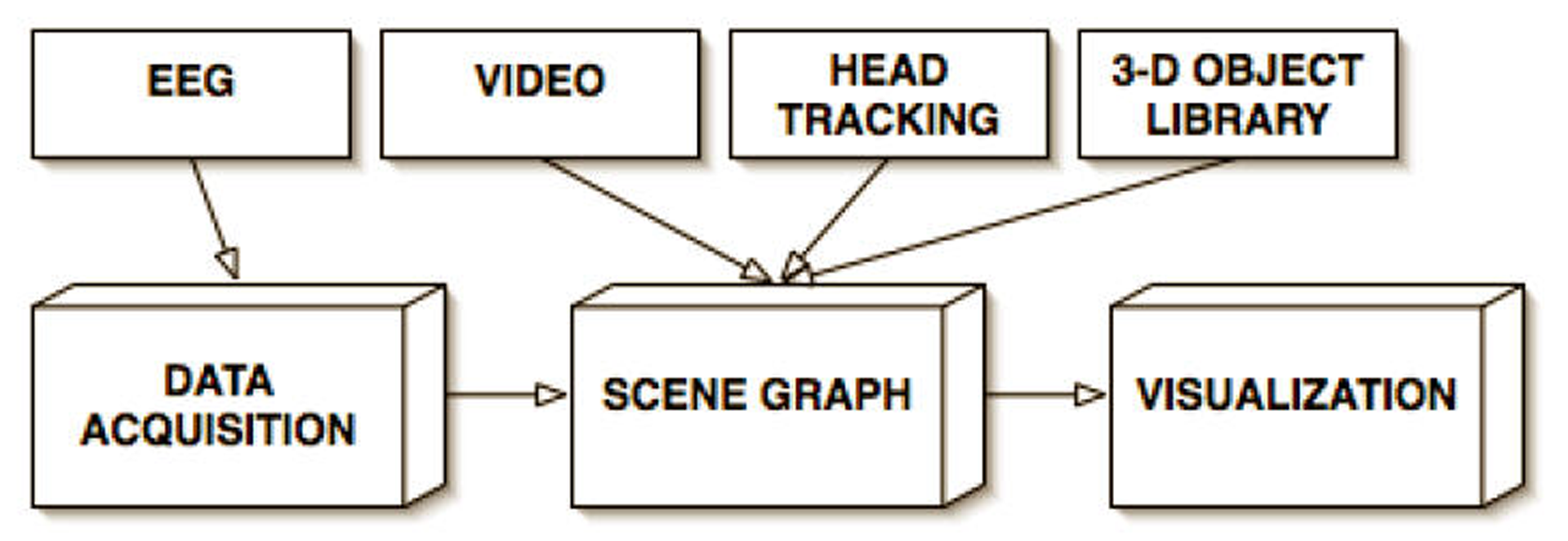“NeuroFloat: real-time state-sensitive brain spaces” by Barnes, Song, Lee, Gromala and Shaw
Conference:
Type(s):
Title:
- NeuroFloat: real-time state-sensitive brain spaces
Presenter(s)/Author(s):
Abstract:
We present a novel interactive system that uses electroencephalographic (EEG) signals obtained from the user as a primary input for navigation through an immersive real-time 3-D visualization of various regions of the human brain. This “NeuroFloat” system is delivered via a head-mounted display (HMD). Our primary goal in developing NeuroFloat was to create a system where the brain-computer interface (BCI) was intrinsically related to the virtual-reality (VR) environment that it interfaced with. Accordingly, at this early stage in the development of NeuroFloat, we chose to develop multiple VR environments that collectively represent a tour through the early stages of the user’s own visual system.
References:
1. Wingate, R. and Kwint, M. 2006. Imagining the brain cell: the neuron in visual culture. Nature Neuroscience Reviews, 7, 745–752.




